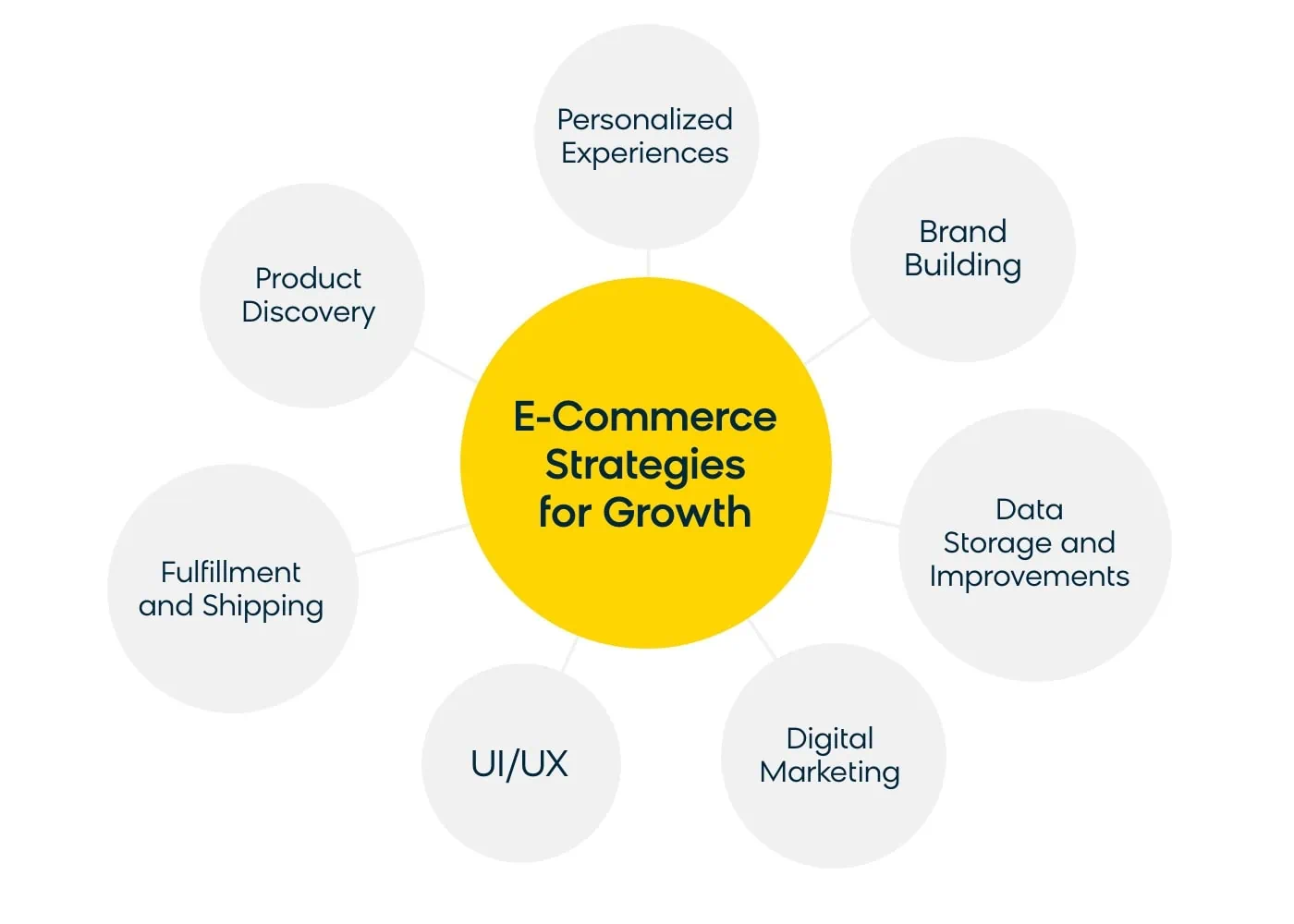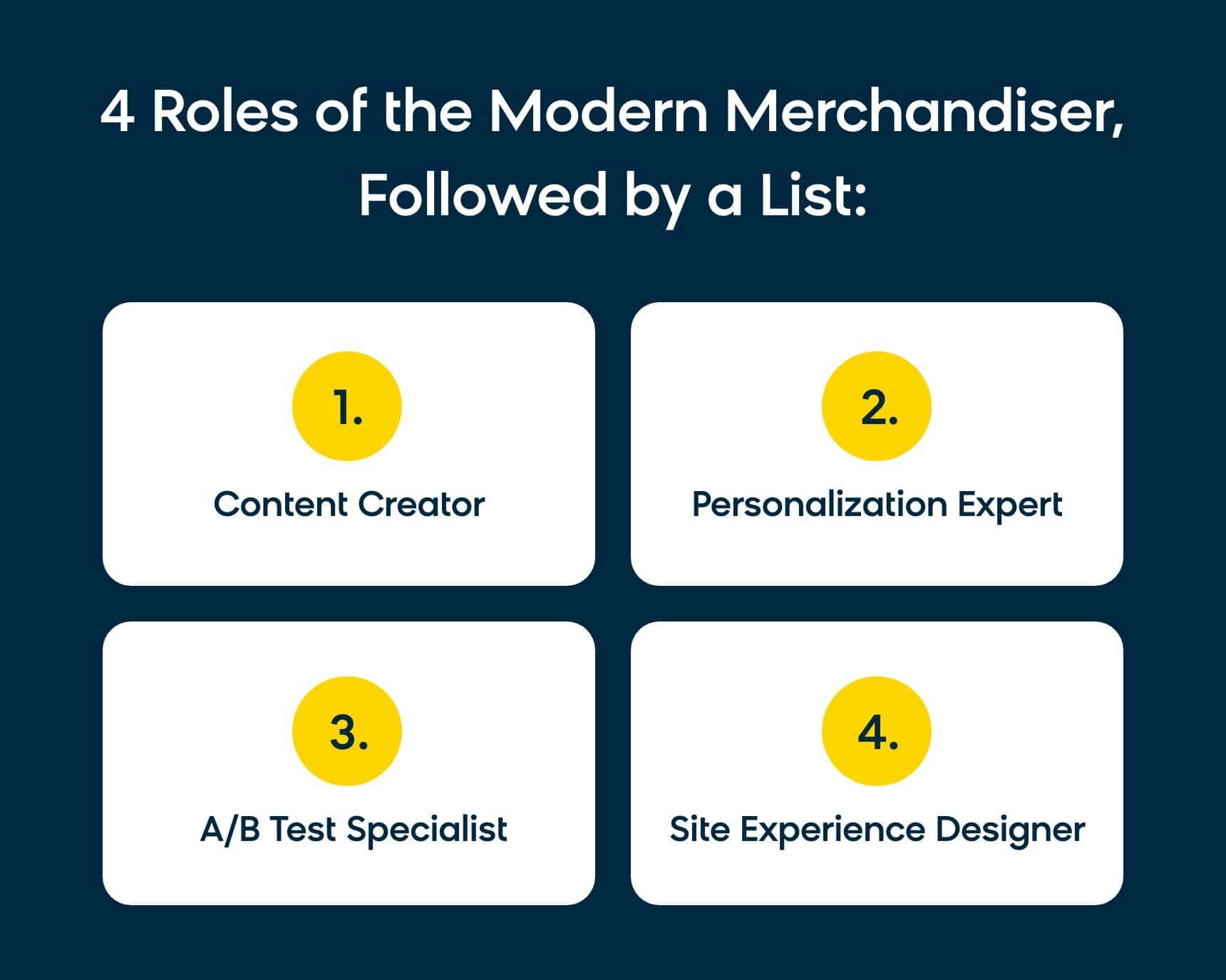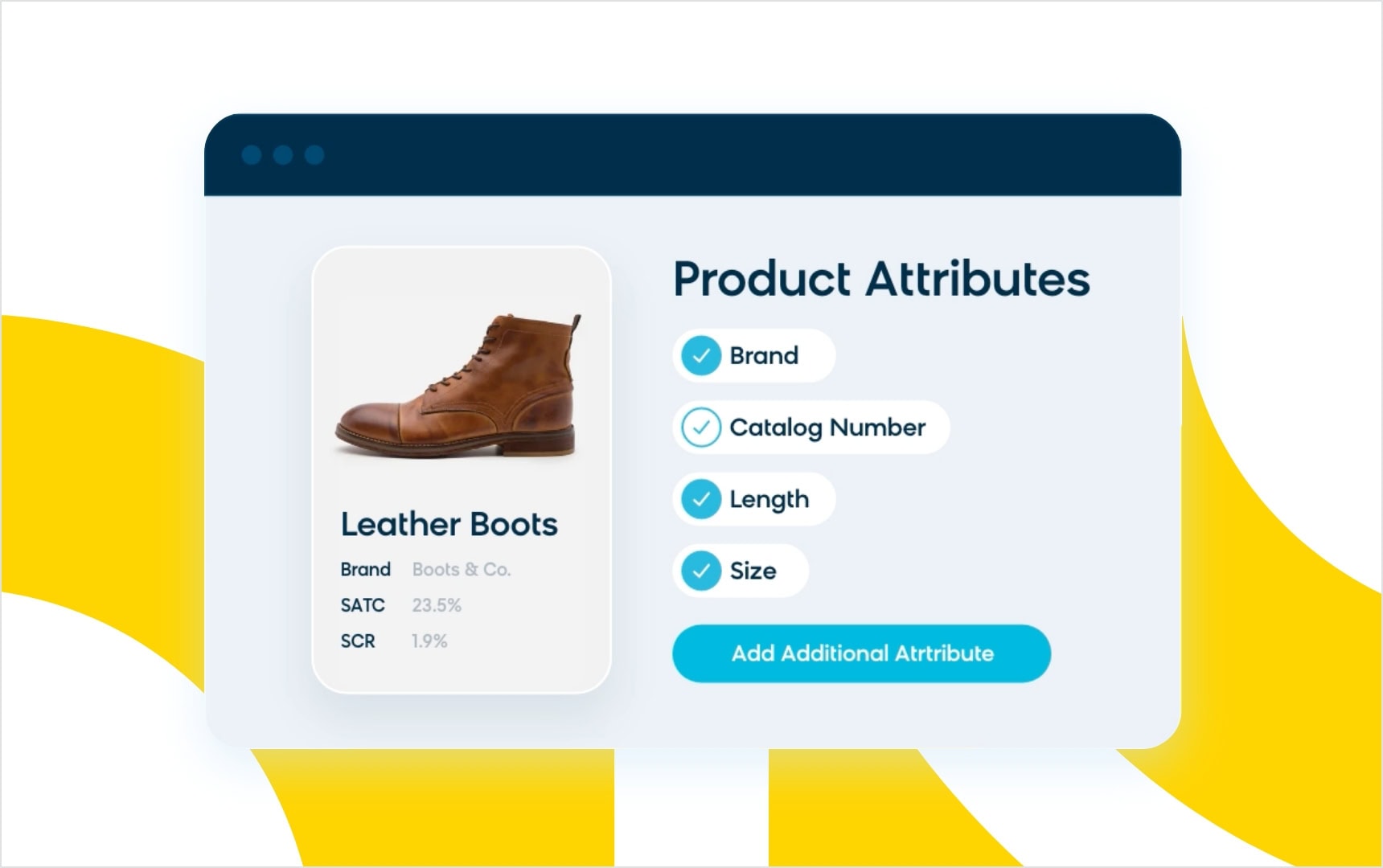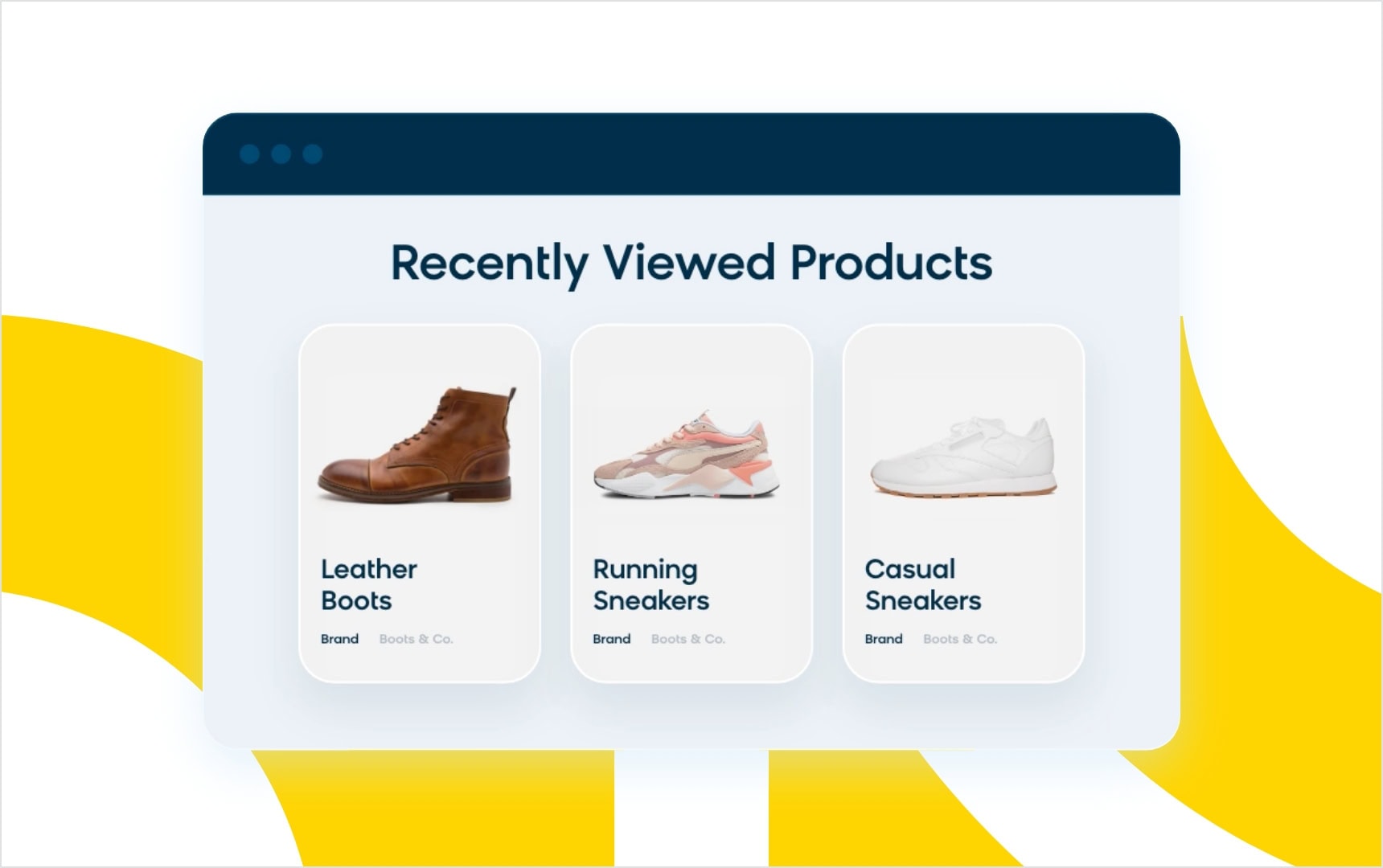Some would say that great merchandising never goes out of style, whether it’s the visual merchandising in your brick-and-mortar storefront or the rows of products displayed on your ecommerce website. It’s also remained crucial to executives at top fashion brands around the world. According to McKinsey, “In one pre-pandemic McKinsey survey, 98 percent of fashion executives said it was their priority to improve go-to-market and merchandising processes. The post-pandemic environment has done nothing to undermine these perspectives.”
Fashion retailer or not, ecommerce is still seeing steady growth, even as it stabilizes after the astronomical traction it gained during the pandemic. Yet, product discovery, which includes digital merchandising, tends to be overlooked for other ecommerce priorities, like data and storage improvements, digital marketing, and fulfillment and shipping. While all these initiatives are well worth your while, product discovery should build the foundation of every ecommerce experience.

Before we get into what you should look for in those cutting-edge digital tools, it might be helpful to explore the evolution of the merchandiser’s role and why it’s so important for them to embrace artificial intelligence (AI).
The Merchandiser’s Role: Then and Now
Over the past 20 years, the role of the merchandiser has significantly evolved, primarily due to advancements in technology and the rise of ecommerce. In fact, the evolution of technology and ecommerce has transformed the role of the merchandiser from a logistical manager to a strategic decision-maker and data-driven optimizer, who uses a powerful combination of data analytics and digital tools to shape the customer journey and influence purchasing decisions.
In the early 2000s, merchandisers were mainly focused on inventory management, using physical inventory to plan and execute appealing product displays in brick-and-mortar stores. But as ecommerce became more popular, many merchandisers, who had been in the industry for 20+ years, were suddenly forced into the digital space and immediately felt alienated by data science and marketing jargon. After being the royalty of commerce for so many decades, they began to feel like they were losing their influence.
The onset of ecommerce necessitated adapting to this skillset, however, and introduced the need for proficiency in digital marketing and data analysis. And as the ecommerce industry matured, naturally, so did the role of the merchandiser. When ecommerce was just getting off the ground, the merchandiser had complete control over everything on a brand website — and not in a good way. They would have to manually select products to display on search and category pages, recommendations widgets, and more.

Yet, this approach needed to be more scalable. And due to the progression of AI and machine learning, it didn’t have to be. Soon enough, merchandisers gained the ability to analyze real-time consumer behavior, view their top optimization opportunities, and create personalized shopping experiences based on all that automated information.
Today’s merchandisers have to be versatile since they are expected to be content creators, personalization experts, site experience designers, and A/B test specialists — all rolled into one job title. When they’re curating an engaging shopping experience, merchandisers must consider the ways products are found and presented online and how that connects to different touchpoints in the shopping journey, in addition to creating compelling product descriptions and blog content, organizing exciting collections and bundles, and launching new products. That’s a lot to juggle on their own, or even within the constraints of a small team.
Why Should Merchandisers Embrace AI, Instead of Fear It?
Do you know how the Industrial Revolution totally changed the way we create products and even the products we use, eventually replacing horses with vehicles, for example? Well, that’s what AI is doing right now. It’s not just changing things; it’s supercharging them. Now that AI is progressing at an accelerated pace we’ve never seen before, it can streamline and automate nearly every aspect of different merchandising strategies, from conception to execution.
It’s like having an assistant who takes care of all the boring stuff for your merchandisers. This sidekick leaves them free to focus on the big picture (i.e. their merchandising strategy). Since AI handles the nitty-gritty details, your teams get to spend more time on the fun stuff that really moves the needle for your business, like curating collections, handling product launches, and orchestrating promotional campaigns.
But AI isn’t just about automation — it also builds a new venue for you to push the creative boundaries. Want to design a product category page that speaks to the needs of each of your customers? AI can help with that. Need to launch an abandoned cart campaign that highlights “Recently Viewed” products? AI’s got your back. By embracing this big change in the market, you’re unlocking a whole new world of potential for your career that will lead to promising future opportunities.
Just keep in mind that AI isn’t just a fad — it’s here to stay. Whether it’s doing mundane tasks or sparking creative innovation, AI is redefining what’s possible in merchandising and creating seamless workflows that lead to big results, like boosts in revenue per visitor (RPV), average order value (AOV), and return on investment (ROI).
A Merchandiser’s Workflow Using AI, Broken Down Step By Step
When your team leverages advanced algorithms and data-driven insights to optimize product placement and enhance the shopping experience, it ensures that your customers are presented with the most relevant, personalized search results, recommendations, and more.
Here’s a step-by-step workflow that any merchandiser could easily follow, using the help of AI to expedite normal processes and attract returning and potential customers.
Identify the Low-Hanging Fruit
To optimize the effectiveness of your merchandising team, you must identify the low-hanging fruit, aka those golden opportunities to optimize your ecommerce website that require minimal effort but lead to substantial results. AI can be leveraged to identify these various opportunities.
This strategic approach should serve as a guiding principle for your merchandising strategy, enabling you to allocate your team’s valuable time and resources where they’re needed and more effectively use the 80/20 rule of merchandising. By prioritizing these areas of opportunity, you’ll ensure tangible outcomes and won’t waste time uncovering insights.
Diagnose Problems
Sure, solving problems related to search and merchandising on your ecommerce website is imperative to maximize sales and customer satisfaction. But it all begins with diagnosing issues accurately. This can be done through analysis of the site’s performance metrics, customer data, and reviews and feedback.
For instance, high bounce rates might indicate that customers are not finding what they’re looking for, suggesting issues with the search functionality. Similarly, low conversion rates could hint at problems with product recommendations or a category page’s display, which may be hindering customers from making purchases. Again, AI can step in here to help digital merchandisers gain a clearer understanding of the challenges they need to tackle, helping them develop effective, business-forward strategies to improve the user experience.
Make Necessary Changes
Once these problems on your site are identified, it’s time to find answers to the obstacles you’ve encountered. This could involve optimizing your site’s product grid, helping your search bar to understand that two words are synonyms, or managing the filter options on the side navigation of a category page.
Leveraging AI and machine learning technologies can help in personalizing search results, predicting customer behavior, and automating parts of the merchandising process. With it, you can easily transform your biggest search and merchandising problems into opportunities for your brand.
Use A/B Testing
A/B testing is a powerful tool for digital merchandisers to fact check their gut instincts and gather the necessary data to put their expertise into action. For example, if you have a feeling that a certain product would sell better on the homepage rather than buried on a category page, you can set up an A/B test to validate this hypothesis. So, half of your website visitors would see the product on the homepage, while the other half would find it on the category page.
When integrated with AI, this process becomes even more efficient and insightful. The AI can analyze the engagement, conversions, and RPV of both versions, providing concrete data to validate or challenge your initial hypothesis. The beauty of AI is that it can process large volumes of data faster and more accurately than humans, making your testing more comprehensive and your decisions more reliable.
5 AI-Driven Merchandising Features That Automate Workflows
Numeric Precision
Customers often use specific attributes to describe desired products in today’s digital shopping landscape. To cater to this, numeric precision works to match the numeric intent of a customer’s query accurately. For instance, it ensures a search for “2 gal milk” yields results for “2 gallon milk”.
It also differentiates between distinct numeric values, understanding that a ¾-inch wire is not the same as a 3- or 4-inch wire. And with its ability to process non-English languages, it recognizes that “2,5 kabel” is equivalent to “2.5 kabel”, or “2,5mm2” matches with “2.5mm2”. Leveraging the power of AI, numeric precision comprehends all the similarities and differences between numeric attributes and units, generating product recalls precisely matched to each query a user types into the search bar, thereby optimizing the shopping experience for your customers.
Customizable Product Card Attributes
Customizable product card attributes have evolved the way merchandisers interact with product data. This AI-driven feature intelligently curates a custom data set to display on product cards in your product grid editor. Not only does it display performance metrics, RPV, add-to-cart (ATC), and conversion rates, but also critical updates, such as inventory levels and margin. Now, merchandisers can get a comprehensive view of important data to aid in making strategic merchandising decisions.
Imagine that you want to run a sale on excess stock. With the help of product card attributes, you can automatically analyze your inventory and identify products available in high quantities. Then, AI empowers your team with valuable insights to strategically promote the same products, ensuring maximum impact and profitability. This allows you to effectively manage your inventory, reduce waste, and make data-driven decisions that drive success for your business.
Catalog Management
A catalog management feature provides a comprehensive, all-in-one solution that enables business users to effortlessly view, manage, diagnose, and explore data across their product catalogs. With this powerful capability, your team gains full control and oversight of the entire data integration process in a convenient self-serve manner — except you don’t have to change everything manually like in the early 2000s. Instead, AI now plays a pivotal role in the collection and management of raw catalog information, including product IDs, attributes, and variants.
The ecommerce search and merchandising vendor you choose should have a suite of tools that covers the entire catalog management experience, from managing the data integration process to configuring and verifying the data. This seamless combination of data, AI, and merchandiser expertise ensures the product discovery experience on your website meets the unique, ever-changing needs of your customers.
Algorithm Controls
Your ecommerce search and merchandising tool of choice also needs these four integral algorithms:
- Search Recall Precision – Noisy and irrelevant search recall makes it hard for customers to find what they’re looking for. Search recall precision is an AI-powered algorithm that eliminates unrelated products from the search recall.
- Query Relaxation – This intelligent AI algorithm works by progressively relaxing the constraints of a user’s search query when no or few results are found, ensuring users are provided with alternative (but accurate) results.
- Spell Correct – Again, leveraging AI, this algorithm automatically corrects misspelled queries, enhancing user experience by making the search process more forgiving and intuitive.
- Facet Precision – Facets, more commonly referred to as filters, allow your customers to refine the product recall set based on certain attributes. AI can analyze multiple facets to determine which ones are the most relevant to display to your shoppers or buyers.
These AI-powered algorithms bring about a new era of efficiency and time savings for businesses. A good search vendor will offer these algorithms — fueled by over a decade of industry learnings across ecommerce — out of the box, along with the ability to tweak them where needed based on your merchandiser expertise. The good news is that you don’t have to spend countless hours on optimizations that can be identified and addressed by AI.
Recently Viewed Widgets
Attracting top-of-the-funnel buyers and guiding them toward conversion can be complex. Luckily, AI can analyze a wide range of customer activity data, including time spent on page, bounce rates, and conversions, to gain a comprehensive understanding of customer preferences and interests. By leveraging AI for personalized customer recommendations, the overall process can be significantly simplified while simultaneously building brand trust.
For example, recommendation widgets, like “Recently Viewed”, can keep items of interest at the forefront of the customer’s mind. This creates a unique shopping experience that allows customers to feel understood and valued, and in turn, bolsters trust and loyalty. AI can also proactively suggest new items tailored to the customer’s style and preferences based on this previous behavioral data. Through this digital take on the more traditional upsell and cross-sell approaches, the customer experience is heightened, leading to higher RPV and AOV for your business.
Bloomreach Is a Top-Tier AI Merchandising Tool
While staying abreast of the latest developments in AI technology is essential, it’s equally important not to get caught up in the marketing hype. When considering an AI search and merchandising solution, you’ll need to ensure it directly addresses your specific needs rather than simply being the latest trend. Trust us, understanding your objectives is key to avoiding SaaS companies that incorporate generic AI capabilities just to “check a box,” rather than providing tangible business value.
When it comes to AI automation in merchandising, the measure of its effectiveness lies not in abstract concepts but in tangible time savings. The true power of AI is evident when it simplifies the merchandising workflow from conceptualizing an idea to executing a fully validated, data-backed plan with just a click of a button. Therefore, always prioritize solutions that genuinely enhance efficiency and contribute to your business goals over those that simply ride the wave of the latest AI buzzwords.
Learn more ecommerce merchandising and Bloomreach Discovery and how merchandisers can use AI to increase their own productivity and company revenue.



















